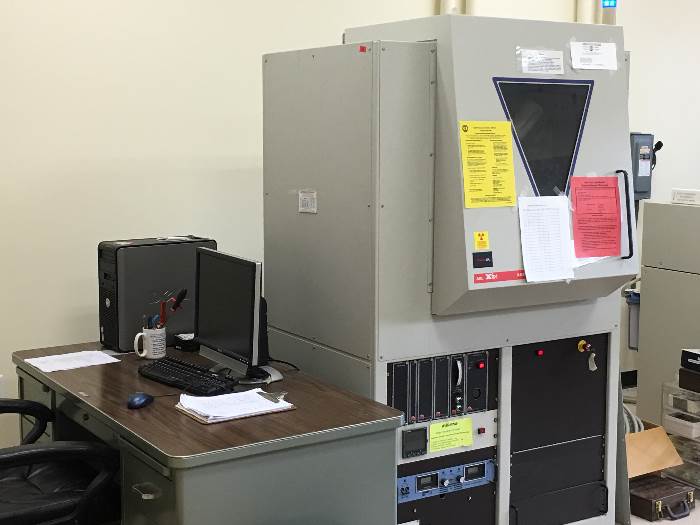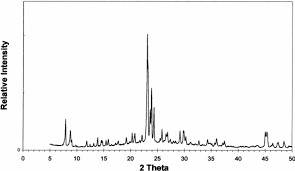X-ray Powder Diffraction (XRD)
|
X-ray Powder Diffraction (XRD) is a powerful nondestructive technique for the identification of crystalline phases in powdered solid samples. The sample is exposed to a monochromatic x-ray beam, and the intensity of the diffracted x-rays are measured as a function of the scattering angle (2Θ). Each crystalline phase of a material produces a unique “fingerprint” pattern, which can usually be identified by comparison to a database of known powder patterns. In mixtures, minor components can also be identified down to about 5% of the bulk material. For samples with very small crystallites, the width of the x-ray scattering lines yields information on the crystallite size. Typical applications include phase identification in most solids and thin-film samples, including minerals, inorganic materials, ceramics, metal alloys, and organic materials. XRD can also be used to determine the percent crystallinity in fibers, polymers, plastics, and glasses. XRD Instrumentation: Thermo ARL XRD Specifications: Sample capacity: 0.5 - 2.0 g Temperature range: ambient to 400 oC Scan rate: 0.1 to 1 deg/min Angular Resolution: 0.005 deg Radiation: CuKa, 1.542 Å Angular Scan Range: 3 – 135 deg Thermo ARL X-ray Powder Diffractometer Typical XRD Scan
|
Some of the links on this page may require additional software to view.



